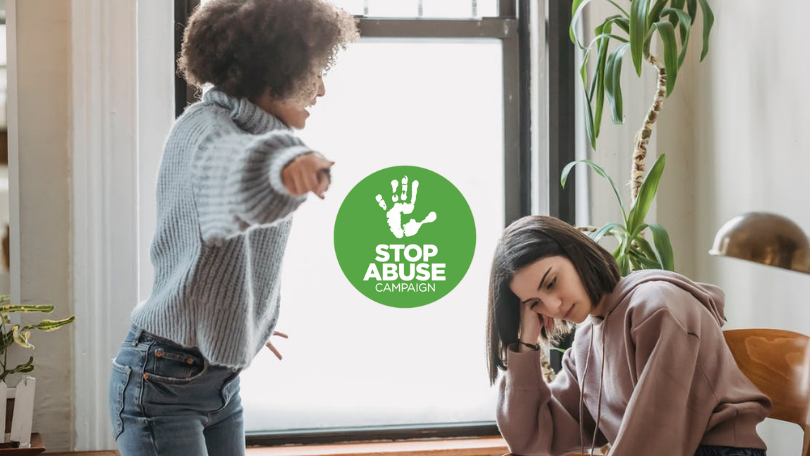The landmark CDC Adverse Childhood Experiences Study defines emotional abuse as when “a parent, stepparent, or adult living in your home often swore at you, insulted you, put you down, or acted in a way that made you afraid that you might be physically hurt.”
Childhood emotional abuse is a form of abuse that damages the core being of a child using psychological tactics.
Childhood Emotional Abuse vs. Emotional Neglect
It is important that we remember emotional abuse and emotional neglect are NOT the same thing. Although they are both forms of ACEs, emotional neglect is when someone in your family never or rarely helped you feel important or special. You never or rarely felt loved. People in your family never or rarely looked out for each other, felt close to each other, or were never or rarely a source of strength and support.
Emotional abuse is an intentional action meant to cause harm and long-term damage. While emotional neglect can be an intentional disregard for a child’s feelings, it is not a malicious intent to purposefully damage those feelings.
Think of it this way. A child comes home crying from being bullied at school. Emotional neglect is when the parent doesn’t notice the tears, the sad face, the drooping head and shoulders. An emotionally neglectful parent is likely only to notice that the child is late and in the way of other things the parent is doing.
An emotionally abusive parent might laugh at the child’s tears and tell them they deserve to be bullied. An emotionally abusive parent may seem to enjoy making the child cry harder, perhaps seem to feel more powerful in verbally beating the child down, whereas a neglectful parent just doesn’t notice.
Identifying Childhood Emotional Abuse
The CDC also described emotional abuse as “behaviors that harm a child’s self-worth or emotional well-being.”
Emotional abuse is the hardest ACE for an outsider to identify because the harm is happening internally to the child and the consequences of prolonged abuse are even more tragic. When emotional abuse is done to a child within the first 18 years of their life, they are likely to face severe short and long-term consequences. During the years of abuse, children are more likely to experience:
- Name-calling, shaming, rejection, withholding love, and threatening
- Feeling fearful most or all of the time
- A tendency to develop a mental health condition like anxiety and/or depression
Consequences of Childhood Emotional Abuse
The ACE study found just under 11% of participants experienced emotional abuse. This is a much higher figure than state child protective agencies typically show, but many states either don’t investigate emotional abuse or consider it a separate category.
Adults who grow up with emotional abuse consequently tend to experience:
- Feelings of hopelessness
- Low self-esteem
- Negative automatic thoughts
- Problems coping with life’s many stressors
The lifetime cost of non-fatal child mistreatment (including emotional abuse) incurred annually in the United States is $401 billion.
Childhood Emotional Abuse Prevention and Resources
It is important to dedicate resources to prevention for all types of ACEs because they are all preventable. As my grandmother would say, “Prevention is better than cure.” It is better and easier to stop a problem from happening than to stop or correct it after it has started. Everyone benefits from a child who has a well-rounded childhood full of love, nurturing, and care. With the implementation of evidence-based programmatic solutions, our nation has the opportunity to prevent:
- 1 in 7 children from having to experience child abuse and/or neglect
- Toxic stress, which can change brain development and increase the risk for problems like post-traumatic stress disorder and learning, attention, and memory difficulties
- Emotional and psychological problems, such as impaired social-emotional skills or anxiety
All we need to do is connect the well-researched solutions to lawmakers who can make these programs come to life. You can help the Stop Abuse Campaign advocate for prevention by taking action.
Through resources like therapy and national hotlines, it is possible to address the effects of childhood emotional abuse and neglect and break the chain of maltreatment done to children.
If you or someone you know is struggling with the long-term effects of childhood emotional abuse or other ACEs, we encourage you to talk about it with your primary care physician so you can be connected to the mental and physical healing options that are right for you.
You can also reach out to one of these national hotlines:
Childhelp National Child Abuse Hotline
(800) 422-4453
National Suicide Prevention Lifeline
(800) 273-8255
National Suicide Prevention Lifeline (Options for Deaf and Hard of Hearing)
For TTY Users: Use your preferred relay service or dial 711 then 1-800-273-8255
Substance Abuse and Mental Health Services Administration National Helpline
(800) 662-4357
You can help make sure this never happens to another child. Learn how by subscribing to our newsletter and supporting our work. Read about the ten categories of ACEs by following our blog. Do you know your ACE score? Take the ACE test here.
Do you know your score?
Discover your ACE score and unlock a new understanding of your life. Take the test and gain insights into how your early experiences shape your well-being. Don't let your past define you – empower yourself with knowledge.

Celest Bucknor
Student
Celest Bucknor is actively pursuing her degree in Communications with a minor in English. She is passionate about helping people and making a difference.
